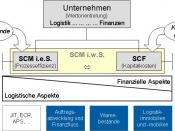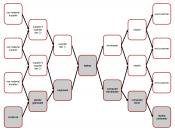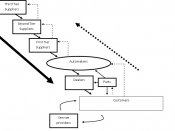Today's fast paced business performance requires constant attention and effort; the process is a never-ending production and movement of goods from production to the customer. In the past, large economies ruled the manufacturing world and everybody knew that mass production and full utilization of plant capacity was the way to make money. This style of manufacturing resulted in inflexible plants that could not be easily reconfigured, and were associated with swollen amounts of raw materials, work-in-process and finished goods inventories.
The term "Leagility" was introduced in the supply chain design to avoid or minimize inflexibility and overage in the supply chain by making it lean and agile. This will keep production cost down and allow the supply chain to be flexible enough to keep up with the uncertainties and rapid changes on product demand. The term Leagility is based on two paradigms: "Lean" and "Agility" operations, not only by the combination of the two words, but also by the combination of the two meanings.
This combination will be explained later in more detail.
This paper discusses the term Leagility in reference to supply chain design and how the term came to be. It will also provide a detailed definition of what Leagility means and how it's a critical part of the supply chain, to include how the two paradigms "Lean" and "Agility" work to make a profitable supply chain. This paper will provide facts and opinions from different reports and write-ups from subject matter experts, news reports, and other documents.
Lean manufacturing prospered in the 1980s and continues to be talked about today. However, in pursuit of greater flexibility, elimination of excess in inventory, shortened lead-times, and advanced levels of quality in both products and customer service, industry analysts have popularized the terms "world-class manufacturing" and "lean production" (Sheridan 1993).


